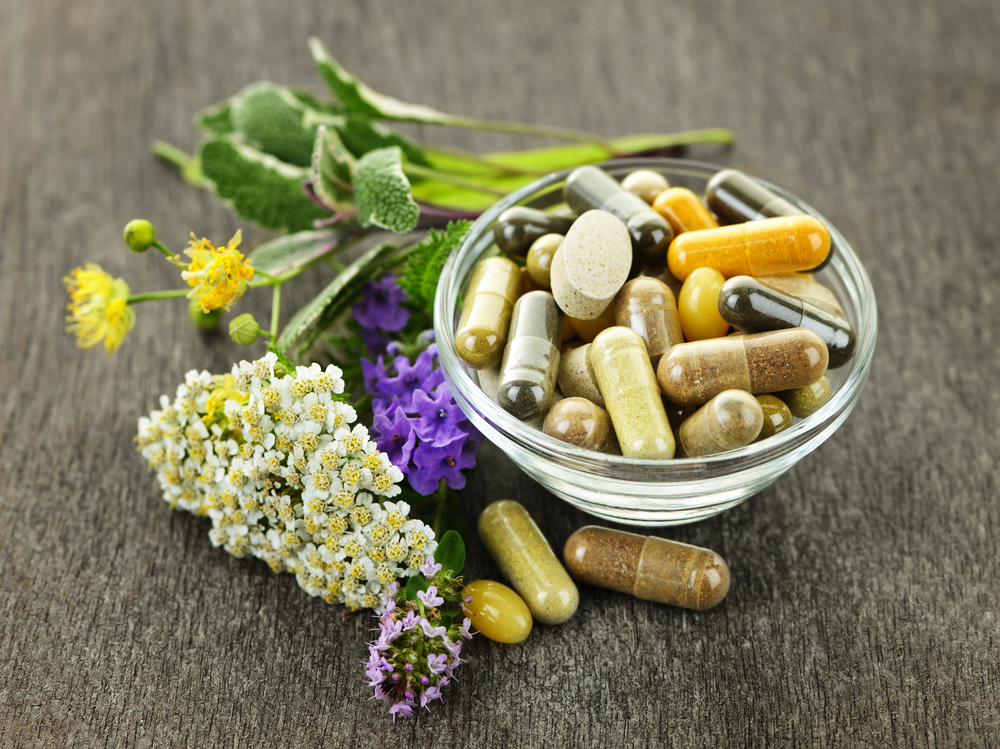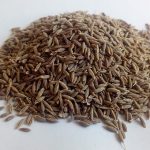In the world of nutrition, few fruits pack as much punch as the humble cranberry. Beyond their tangy flavor and vibrant color, cranberries are bursting with an array of health-promoting properties that make them a true superfood. From supporting urinary tract health to fighting inflammation and boosting immune function, the health benefits of cranberries are both wide-ranging and impressive.
In this article, we’ll delve into the remarkable world of cranberries, uncovering the science behind their incredible health benefits and exploring how incorporating these tiny yet mighty berries into your diet can contribute to your overall well-being. Join us on a journey through the nutritional powerhouse that is the cranberry, and discover why these little gems deserve a place of honor in your daily diet.
History of Cranberries
The history of cranberries dates back centuries and is intertwined with indigenous cultures, early settlers, and evolving agricultural practices. Here’s a brief overview of the history of cranberries:
- Indigenous Cultures: Cranberries have been utilized by indigenous peoples in North America for centuries. Native American tribes, particularly those in the Northeastern United States and Canada, used cranberries for various purposes, including food, medicine, and dyes. They mixed cranberries with deer meat or maple syrup to make pemmican, a high-energy food, and used cranberry poultices to treat wounds.
- Colonial Era: European settlers in North America encountered cranberries in the 17th century. They observed Native Americans using cranberries and began incorporating them into their own diets. Cranberries were also used by sailors to prevent scurvy due to their high vitamin C content. By the 18th century, cranberries had become a staple food in New England, where they were consumed fresh, dried, or cooked into sauces.
- Commercial Cultivation: Commercial cultivation of cranberries began in the early 19th century. The first commercial cranberry bog was established in Massachusetts in the 1810s. Early cranberry farmers used a variety of methods to grow cranberries, including flooding fields to facilitate harvesting, a practice that continues today. As demand for cranberries grew, cultivation spread to other regions of the United States and Canada.
- Development of Cranberry Industry: Over time, advancements in agricultural techniques and technology, such as the invention of cranberry harvesting machines, helped to expand and streamline cranberry production. Cranberries became an important agricultural commodity, with cranberry farms dotting the landscape of regions like Massachusetts, Wisconsin, New Jersey, and British Columbia.
- Cultural Significance: Cranberries have become deeply ingrained in American culture and traditions. They are a prominent feature of Thanksgiving feasts, where cranberry sauce is a staple accompaniment to turkey. Cranberries are also enjoyed in a variety of other dishes, including baked goods, beverages, and salads.
Today, cranberries are not only valued for their culinary versatility but also recognized for their health benefits and nutritional value. The cranberry industry continues to thrive, with cranberries being exported worldwide and consumed in various forms, including fresh, dried, juice, and as supplements.
Health Benefits of Cranberries
Cranberries offer a multitude of health benefits, thanks to their unique nutritional profile and bioactive compounds. Here are some of the notable health benefits of cranberries:
- Urinary Tract Health: Cranberries contain compounds called proanthocyanidins, which can help prevent urinary tract infections (UTIs) by inhibiting the adhesion of bacteria, such as E. coli, to the urinary tract lining. Consuming cranberry products, such as juice or supplements, may help reduce the risk of recurrent UTIs, particularly in women.
- Antioxidant Protection: Cranberries are rich in antioxidants, including flavonoids, phenolic acids, and vitamin C, which help neutralize harmful free radicals in the body and reduce oxidative stress. Antioxidants play a crucial role in protecting cells from damage, reducing inflammation, and lowering the risk of chronic diseases, such as heart disease, cancer, and neurodegenerative disorders.
- Heart Health: Regular consumption of cranberries may support heart health by reducing risk factors for cardiovascular disease. Cranberries have been shown to lower LDL cholesterol levels, increase HDL cholesterol levels, reduce blood pressure, and improve vascular function. These effects may help reduce the risk of heart attacks, strokes, and other cardiovascular events.
- Digestive Health: The fiber content in cranberries promotes digestive health by supporting regular bowel movements and preventing constipation. Additionally, cranberries contain compounds that may help inhibit the growth of H. pylori bacteria, which are associated with stomach ulcers and gastritis.
- Anti-Inflammatory Properties: Some studies suggest that the bioactive compounds in cranberries, such as flavonoids and anthocyanins, have anti-inflammatory effects that may help reduce inflammation in the body. Chronic inflammation is linked to various health conditions, including arthritis, diabetes, and inflammatory bowel diseases.
- Immune Support: The vitamin C content in cranberries supports immune function by stimulating the production of white blood cells and enhancing the body’s defense mechanisms against infections and illnesses. Consuming cranberries regularly may help strengthen the immune system and reduce the duration and severity of colds and other respiratory infections.
- Oral Health: Compounds found in cranberries may help prevent the formation of dental plaque and inhibit the growth of bacteria associated with gum disease and tooth decay. Incorporating cranberries into your diet may contribute to better oral hygiene and reduced risk of periodontal disease.
Overall, cranberries are a nutritious and versatile fruit that offer a wide range of health benefits, making them a valuable addition to a balanced diet. Whether consumed fresh, dried, juiced, or in supplement form, cranberries can be enjoyed in various ways to support overall health and well-being.
What are some easy ways to add cranberries to your diet?
Incorporating cranberries into your diet is easy and adds a deliciously tart flavor to a variety of dishes. Here are some simple ways to enjoy cranberries:
- Trail Mix: Create your own trail mix by combining dried cranberries with nuts, seeds, and perhaps a few chocolate chips for a sweet and savory snack on the go.
- Salads: Sprinkle dried cranberries onto salads for a burst of sweetness and tanginess. They pair well with leafy greens, nuts, cheese, and vinaigrette dressings.
- Baked Goods: Add dried cranberries to your favorite baked goods, such as muffins, cookies, scones, and bread. They add texture, flavor, and a pop of color to your treats.
- Oatmeal or Porridge: Stir dried cranberries into your morning oatmeal or porridge for a sweet and tart flavor contrast. You can also add nuts, seeds, and a drizzle of honey for extra flavor and crunch.
- Yogurt Parfait: Layer dried cranberries with Greek yogurt, granola, and fresh fruit to create a delicious and nutritious parfait for breakfast or a snack.
- Smoothies: Blend frozen cranberries into smoothies for a refreshing and antioxidant-rich beverage. Combine them with other fruits, leafy greens, yogurt, and a splash of juice or milk for a nutritious boost.
- Sauces and Chutneys: Make homemade cranberry sauce or chutney to accompany roasted meats, poultry, or vegetarian dishes. Simmer cranberries with sugar, orange juice, and spices until they burst and thicken into a flavorful sauce.
- Grain Salads: Mix cooked grains like quinoa, bulgur, or farro with dried cranberries, chopped nuts, fresh herbs, and a simple vinaigrette for a hearty and satisfying salad.
- Stuffing or Dressing: Add dried cranberries to stuffing or dressing recipes for a touch of sweetness and tartness. They complement savory ingredients like bread, onions, celery, and herbs.
- Infused Water or Tea: Add a handful of dried cranberries to a pitcher of water or herbal tea for a refreshing and subtly flavored beverage. The cranberries will infuse the liquid with their fruity essence.
These are just a few ideas to get you started, but the possibilities are endless when it comes to incorporating cranberries into your diet. Get creative and experiment with different recipes and flavor combinations to enjoy the unique taste and nutritional benefits of cranberries.
Does canned cranberry sauce have health benefits?
Canned cranberry sauce can provide some health benefits, but it’s important to be aware of its nutritional content and potential drawbacks.
- Antioxidants: Cranberries are rich in antioxidants, such as flavonoids, phenolic acids, and vitamin C, which can help neutralize harmful free radicals in the body and reduce oxidative stress. Canned cranberry sauce may still retain some of these antioxidants, although the processing and cooking methods involved in canning can reduce their potency.
- Urinary Tract Health: Cranberries contain compounds called proanthocyanidins, which may help prevent urinary tract infections (UTIs) by inhibiting the adhesion of bacteria to the urinary tract lining. While canned cranberry sauce may still contain some of these compounds, its effectiveness in preventing UTIs may be lower compared to fresh cranberries or cranberry juice.
- Fiber: Cranberries are a good source of dietary fiber, which is important for digestive health and can help regulate bowel movements. However, canned cranberry sauce may contain added sugars and other ingredients that can reduce its fiber content and nutritional value.
- Added Sugars: Many canned cranberry sauces are sweetened with added sugars to enhance flavor and preserve shelf life. Consuming excessive amounts of added sugars can contribute to weight gain, dental cavities, and other health issues. Opting for canned cranberry sauce with no added sugars or choosing homemade versions with natural sweeteners may be a healthier option.
- Vitamins and Minerals: Canned cranberry sauce may still contain some vitamins and minerals found in fresh cranberries, such as vitamin C and manganese. However, the processing and heating involved in canning can lead to nutrient losses, so the nutritional content of canned cranberry sauce may be lower compared to fresh cranberries.
Overall, while canned cranberry sauce can provide some health benefits, it’s important to consume it in moderation and be mindful of added sugars and other ingredients. Incorporating a variety of cranberry products, including fresh cranberries, cranberry juice, and dried cranberries, into your diet can help maximize the potential health benefits of this nutritious fruit.
In conclusion, cranberries are a nutrient-rich fruit that offers a wide range of health benefits. Packed with antioxidants, fiber, vitamins, and minerals, cranberries have been linked to improved urinary tract health, heart health, immune function, and digestive health. Their unique compounds, such as proanthocyanidins and flavonoids, contribute to their antioxidant and anti-inflammatory properties, making them a valuable addition to a balanced diet. While fresh cranberries are ideal for maximizing nutritional content, canned cranberry products, such as sauce or juice, can still provide some health benefits when consumed in moderation. Incorporating cranberries into your diet, whether fresh, dried, juiced, or in sauce form, is a delicious and convenient way to reap the numerous health benefits associated with this versatile fruit. So, whether enjoyed as part of a festive holiday meal or incorporated into everyday recipes, cranberries are a flavorful and nutritious addition to any diet, offering a tasty boost to overall health and well-being.
Sources:
https://wellself.com/urinary-tract-infection/
https://www.urmc.rochester.edu/encyclopedia/content.aspx?contenttypeid=19&contentid=proanthocyanidins#:~:text=General%20description,and%20may%20help%20prevent%20cancer.
https://www.nj.gov/pinelands/infor/educational/curriculum/pinecur/tcs.htm#:~:text=The%20history%20of%20cranberries%20is,%22%20and%20also%20%22pakimintzen.%22









